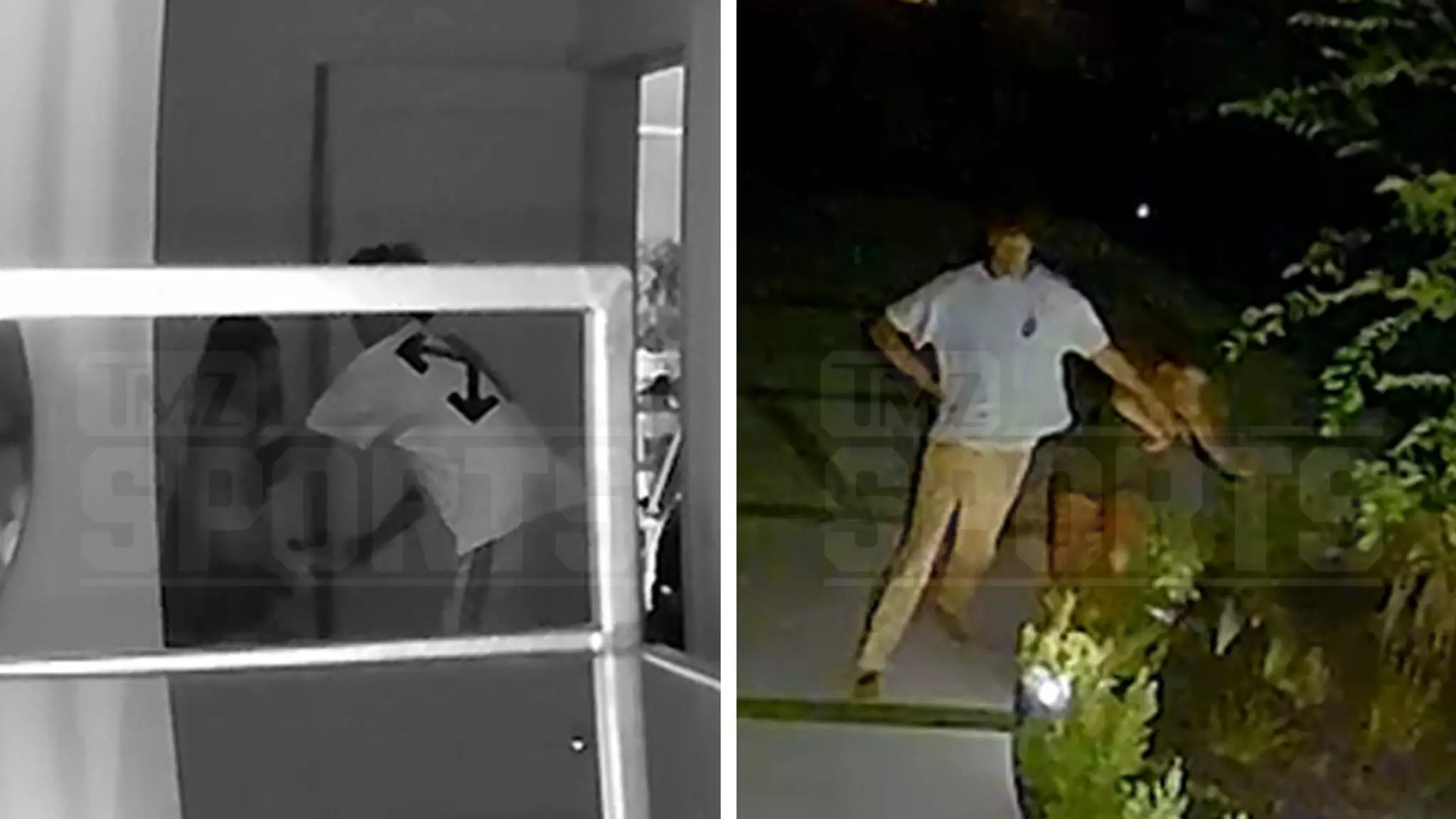In July 2021, Los Angeles Lakers player Jaxson Hayes found himself at the center of a disturbing domestic incident that would ultimately result in legal consequences and public scrutiny. The situation escalated to a point where it culminated in an arrest, drawing attention to issues of domestic violence, celebrity accountability, and the repercussions of personal actions in the public eye. Surveillance footage from the altercation, which surfaced through sources close to Hayes’ then-girlfriend, Sofia Jamora, reveals a timeline that accentuates the intensity of the dispute, highlighting behaviors that resonate with patterns commonly seen in domestic violence cases.
The catalyst for the altercation was reportedly a dispute between Jamora and Hayes over the wellbeing of their pets. Tension spiraled rapidly, which is not unusual in emotionally charged confrontations; however, the situation took a distressing turn when Jamora was physically confronted. Hayes, a towering figure at 7 feet tall, was seen on video pulling Jamora from one room to another, despite her desperate pleas for him to stop. The graphic nature of the footage serves as a sobering reminder of how domestic violence can manifest in both verbal and physical forms, marking a grim reality that many individuals face behind closed doors.
The interactions captured on the surveillance footage illustrate a deeper dynamic often observed in abusive relationships: power and control. Jamora’s repeated requests for Hayes to let her go represent an exercise of autonomy that she was desperately trying to reclaim. In stark contrast, Hayes’ behavior was emblematic of the overpowering tendencies that characterize abusive situations. Words exchanged during the altercation, including Jamora’s assertion, “What the f*** do I look like, a punching bag?” underscore the emotional and psychological toll that such encounters can inflict on victims. Her plea illustrates a significant understanding of her victimization and a refusal to be relegated to a position of submission.
Following the escalating physical confrontation, it is significant to note the response from those around them, particularly Hayes’ cousin. The cousin’s futile attempts to mediate the situation highlight the confusion and urgency often present among bystanders during domestic disputes. The cousin’s involvement may raise questions regarding accountability and support for the victim, urging individuals witnessing such behaviors to take responsibility and act as allies.
When law enforcement arrived on the scene, the situation intensified further. Initial reports indicate that Hayes resisted arrest, even shoving an officer and subsequently leading to a physical response from the police, including the use of a taser. This escalation reiterates the chaotic nature of domestic violence incidents, often marked by the defense mechanisms of individuals caught up in intense emotional reactions. It reflects a system that, while aiming to enforce the law, also finds itself embroiled in an excessive use of force investigation, potentially underscoring systemic issues within policing methodologies.
The legal ramifications that followed Hayes’ actions were considerable yet somewhat limited in their repercussions. Although he faced up to 12 charges, he ultimately pled no contest to resisting arrest and false imprisonment, resulting in probation and mandatory community service. Interestingly, the NBA chose not to penalize him, underscoring a frequent conversation regarding the responsibility of professional sports leagues in addressing off-court behavior by their athletes. This raises essential questions about the consequences faced by public figures in instances of domestic violence and the responsibility organizations have toward educating and preventing such issues within their ranks.
The incident involving Jaxson Hayes serves as a clarion call for more extensive discourse surrounding domestic violence, influential athletes, and societal accountability. It highlights the imperative for personal responsibility, both by individuals and institutions, in addressing and preventing domestic abuse. As we continue to grapple with the complexities of such scenarios, it underscores the importance of advocating for victims and recognizing the signs of abuse, both within relationships and broader societal contexts. The incident is not merely a personal tragedy; it is reflective of a pandemic of violence that requires systemic change and ongoing conversation to ensure the safety and dignity of all individuals involved.







Leave a Reply